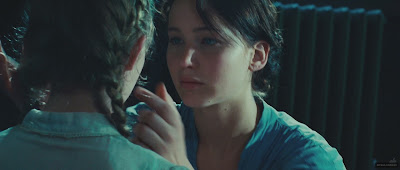"Breakfast At Tiffany's" (1961)
 The movie is based around a young New York socialite. The character of Holly Golightly subverts the stereotype of how women were perceived back in those days. Females normally use to live in rural areas, and be a housewife with a male breadwinner. However, Holly was a single female living in the city of New York. Women in the 1960s were expected to be conservative and only expose themselves to their husbands, but Holly is portrayed as flirty with men since the start of the film and acts as it is a natural and normal thing. The movie makes the character of Holly Golightly dominant in her relationships, which is completely contrasting the social norm of the male being in charge.
The movie is based around a young New York socialite. The character of Holly Golightly subverts the stereotype of how women were perceived back in those days. Females normally use to live in rural areas, and be a housewife with a male breadwinner. However, Holly was a single female living in the city of New York. Women in the 1960s were expected to be conservative and only expose themselves to their husbands, but Holly is portrayed as flirty with men since the start of the film and acts as it is a natural and normal thing. The movie makes the character of Holly Golightly dominant in her relationships, which is completely contrasting the social norm of the male being in charge.
Nowadays, women are still portrayed to be the lesser of a gender. Moreover, the social norms still have not changed as the man is the one most likely to be dominant, but there can be exceptions. Furthermore, females are also more flirty now, as I believe they have more freedom and get a full time partner later in life. This is due to them wanting to start a career.
In the movie poster Holly Golightly is dressed in a sophisticated long black gown. This connotes her glamour and how well she carried herself as a women in those times. Also it gives her a higher status. This movie could be using the Hypodermic Needle Theory. This is due to the fact that it is trying to imply new norms for women to start thinking higher of themselves and have more confidence. It is empowering.
"Thelma & Louise" (1991)
The movie is about 2 women; waitress and a housewife who escape from their reality. At the start both of the women are presented very stereotypically. This is due to one of them being a housewife; she has to clean, cook etc. Furthermore, the Louise is a waitress, which is a very low paid job that doesn't require skills or any hard labour. Also at the start we can see the women obeying her husband. This has now changed as women aspire to have a well paid job and a career. Also, women are entitled to a education which results in them getting quite good paid jobs
However, after the stereotype is subverted as Thelma & Louise decide to leave and have a vacation. At this time they are drinking and having fun - being free.
The connotations are the two of them looking very happy and pleased in the polaroid picture on the poster of the movie. This hows that they did not regret it and are having the best time ever. Also, in the trailer there is a scene of the both of them in a pub which represents them as stronger and more masculine. I believe this also links to the Hypodermic Needle Theory as it shows women that you can do anything and get out of abusive relationships. It is trying to carry a message across to the audience targeted - females.
"Black Swan" (2010)
 The movie is about a dancer that got her dream role in the play "Swan Lake" however, she has to battle her psychological side and rival to get through till the end. The movie represents women as quite unstable and that they can not cope with pressure. The main character "Nina" is shown as she is battling her own self due to anxiety stress and pressure. Women are still till this day represented as weak and very emotional. Women are also represented in a way that they are not good enough and have confidence and self esteem issues. Nowadays, this is still the case as a lot of women are not happy with themselves.
The movie is about a dancer that got her dream role in the play "Swan Lake" however, she has to battle her psychological side and rival to get through till the end. The movie represents women as quite unstable and that they can not cope with pressure. The main character "Nina" is shown as she is battling her own self due to anxiety stress and pressure. Women are still till this day represented as weak and very emotional. Women are also represented in a way that they are not good enough and have confidence and self esteem issues. Nowadays, this is still the case as a lot of women are not happy with themselves.
The main actress on the poster has a black mask on. This links to the title as it shows her as the black swan. The colour black connotes death as well as elegance and sophistication. Due to her face makeup being very pale it does hint that maybe the black swan is the other side to Nina. The theory that i believe applies to this is the Uses and Gratification Theory. I believe it applies to 2 uses and gratifications;integration and personal identity. Integration as people watching the movie will sympathize with the character due to her hardships. It could also be personal identity as the viewer might have experienced something similar to this causing them to be able to relate to it.
















